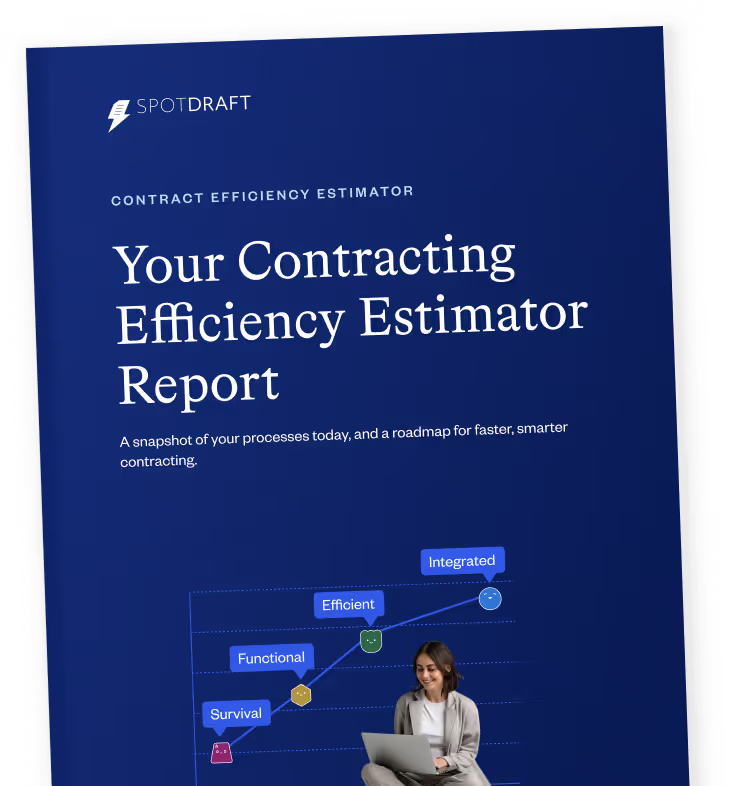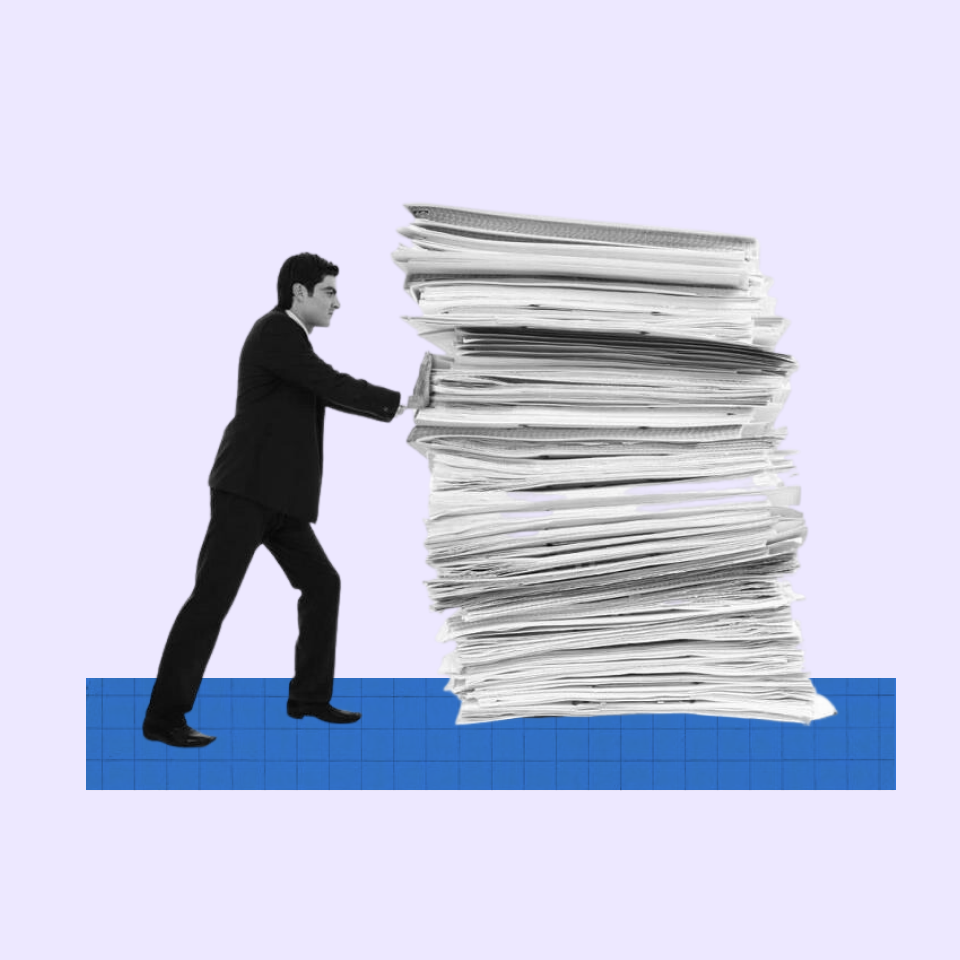Just after you authorized a vendor contract, there was an unexpected delivery delay. While everyone is blaming others, what is the real problem? There were gaps in the contract.
Contractual details are typically the deciding factor in procurement negotiations, and effective management is essential to prevent minor errors from becoming major difficulties.
Contract management helps you achieve this. From choosing a vendor to reducing risk, each choice matters. In this post, we'll explore how contract management in procurement can help your business save money, time, and stress.
What is a procurement contract?
It’s just a way of saying, “Let’s make sure we’re both clear about this deal.” It’s a legal agreement between you (the buyer) and the person or company selling you stuff (the seller). Basically, it’s like setting ground rules so everyone knows what’s up. This way, you avoid any confusion or headaches later.
What's in the contract?
Here's a quick rundown of what you'll usually find in one of these contracts:
- Parties Involved: This is where you name everyone who’s part of the deal. It’s like the guest list for the contract – you’ve got you (or your company) on one side and the supplier or vendor on the other. It’s essential because it sets out who’s doing what.
- Terms and Conditions: This is the meat and potatoes of the contract. It’s got all the key details like how much you’re paying when the goods or services need to show up, any warranties, and what happens if things go sideways. Basically, all the stuff you definitely don’t want to miss.
- Deliverables: This is the “what exactly am I getting” part. You don’t want any surprises, so everything needs to be spelled out: quantities, quality, and any specific requirements. If it’s not in here, it’s not officially on the table.
- Duration: How long is this whole thing going to last? This is your timeline – start dates, end dates, and maybe some options for renewal if things are going well. And of course, what happens if you need to bail early? Nobody likes surprises, especially when it comes to deadlines.
- Legal Clauses: Yeah, the fine print. It’s the section you probably want to skim, but it’s got the stuff that can save your bacon if things get messy. How do we solve disputes? Who’s on the hook for what? And can we all keep our mouths shut if something confidential comes up? It's all in here.
- Signatures: The moment of truth. Once both sides have signed on the dotted line, it’s game on. Your official high-five says, “Yep, we’re doing this.”
Why do procurement contracts matter?
These contracts are pretty much your safety net. If someone doesn’t do what they promised, you can take legal action. That’s why it’s so important. Both sides know what’s expected, and it keeps things on track.
How do they affect business?
Procurement contracts keep everything running smoothly. They make sure you get what you need when you need it. No hiccups. And when you have a good contract, it shows the supplier that you’re serious. This builds trust and helps you work better together.
Types of procurement contracts
#1 Fixed-price contracts
In these contracts, you agree on a set price for a specific job, no matter how much it costs to get it done. It’s like telling a contractor, “Here’s $1,000 to paint my house,” and even if they use more paint or time, you’re not paying a penny more. This works best when you know exactly what you want, and there’s little chance of things changing.
#2 Cost-reimbursable contracts
With this one, you’re covering all the actual costs plus a bit extra for the supplier’s effort. Imagine it like going out to eat with a friend and agreeing to pick up the tab for everything they order—plus a little bonus for their company. It’s great for projects with uncertain final costs, like research or consulting work, because you’re not locking yourself into a set price from the start.
#3 Time and materials contracts
Pay-as-you-go. You’re billed for the time spent and materials used. It’s good for projects that aren’t set in stone and might evolve over time, like software development. Keep an eye on the clock, and the shopping list or costs can spiral!
#4 Indefinite delivery contracts
You’re committing to something without knowing exactly how much you’ll need or when. It’s like signing up for a streaming service where you don’t know what shows you’ll watch, but you know you’ll be watching something over the next few months.
Benefits of procurement contracts
#1 Helps reduce risks in sourcing
Procurement contracts help avoid problems when buying goods or services. They make sure everyone knows what to expect and what happens if things go wrong. For example, if there’s a delay, the contract can say what to do or what penalties apply. This way, both sides are clear, and there are fewer surprises or conflicts.
Also read: Effective Contract Risk Management: Top Tips & Strategies
#2 Manage common procurement risks
Contracts are great for handling typical problems like price changes or a supplier not delivering. They can include terms that adjust prices or set penalties if promises aren’t kept. They also cover things like protecting your ideas or data. Basically, they’re there to keep everything safe and fair.
#3 Keeps everything legal and compliant
Contracts make sure you’re following all the rules, whether they’re about the environment, labor, or other laws. They spell out what both you and the supplier need to do. This helps avoid legal issues and makes sure your company is acting responsibly.
Also read: What is Contract Compliance? The Ultimate Guide - SpotDraft
#4 Supports company goals and standards
Good contracts make sure your purchases match what your company stands for. If your business values sustainability, your contracts can require suppliers to use eco-friendly materials. This way, everything you buy supports your company’s mission and values.
#5 Makes the procurement process smooth
Contracts save time by setting terms in advance. You don’t have to negotiate each time you make a purchase. Using standard templates can speed things up, especially for regular buys. This keeps everything organized and makes it easier to track what’s going on.
Also read: Unlock Efficiency with Contract Collaboration Software
Objectives of Procurement Contract Management
#1 Keeping Costs Under Control
Cost control in procurement relies heavily on effective contract management. Clearly stated pricing terms and reviews avoid expenditure overrunning budgets and allow the ascertainment of best value. Fixed-price contracts with performance incentives may be an effective method of cost management.
Also read: Calculate How Much Your Contracts Cost You. Get The ... - SpotDraft
#2 Building strong supplier relationships
Strong relationships with suppliers can only be achieved by first laying the foundation of well-structured contracts. A clear agreement builds trust and lessens misunderstandings, allowing for the furtherance of long-term partnership building.
Also read: How to Review Vendor/Supplier Contracts: A Comprehensive Guide
#3 Ensuring quality and on-time delivery
Contracts set the benchmark on quality and delivery timelines that call for attention from suppliers. Controlling such benchmarks through effective contract oversight secures project outcomes, keeps your business on track, and ensures customer satisfaction coupled with a good reputation.
Benefits of investing in procurement contract management software
“As GC of a small technology company, I often find myself reviewing long standard agreements from large-company procurement departments (in which Contract Tools almost always finds errors). Then I typically have to graft on parts of our standard contracts to provide the details of our products and services. That means I start with a lot of inconsistent definitions that need to be harmonized throughout a document that’s typically 50 pages or longer. Without Contract Tools it would be a painful, time-consuming, and error-prone process to find and fix all the issues. Contract Tools makes it simple.”
~ Sterling Miller, CEO of Hilgers Graben PLLC
Ten Things – How to Read a Contract
Investing in contract management software can minimize the workload for both procurement and vendor management teams. This is because the software streamlines the contracting process, offers better visibility, and helps achieve key objectives like cost reduction and performance tracking.
#1 Centralize all contracts
All your contracts are stored in one place through contract management software. No more sifting through emails or drives. One can find a contract in minutes using key terms, expiration dates, or renewal options. This saves a lot of time and ensures that no critical document is missed.
#2 Apply advanced technology to achieve efficiency
With AI and OCR incorporated into the contract management software, data extraction, and key term highlighting are automated—outsourcing the results that would otherwise take hours of manual review. Productivity increases while errors decrease.
#3 Track contract status in real-time
The software provides live status updates on all stages of your contracts, whether under legal review or awaiting approval. This eliminates follow-ups and keeps the concerned person updated.
#4 Generate and access reports with ease
Reports are generated swiftly and easily. You can create reports by contract type, expiration dates, or any criteria to identify cost-saving opportunities and make well-informed decisions. Customizable reports allow for deeper analysis of the data.
#5 Efficiently manage global contracts
Managing contracts can be challenging, especially given the scale and variety of operations worldwide. Contract management software links all related contracts across different business units, providing complete visibility, avoiding duplication, and enabling effective management.
Also read: Why Your Procurement Team Will Find SpotDraft CLM Solution Useful
Common challenges in procurement contract management
#1 Dealing with tons of contracts
Keeping up with a pile of contracts is tough. Even though following the terms might seem easy, the sheer number of contracts makes it hard to keep track of who owes what and when.
#2 Finding contracts is a pain
When contracts are scattered in emails, hard drives, or paper files, it’s tough to find what you need. Keeping everything in one place saves a ton of time and hassle.
#3 Legal review is a black hole
Once contracts go to the legal team, it’s like they vanish into a black hole. You end up wasting time checking in on the status. A tracking system can help everyone stay in the loop without constant follow-ups.
#4 Missing renewal deadlines
Forgetting to renew a contract can cost you, especially if it automatically renews with bad terms. When contracts are all over the place, staying on top of renewals is tough. You don’t want to get stuck in a deal you didn’t mean to renew.
#5 Struggling to track spending
To really know what you're spending, you need accurate data. If your contracts are scattered, getting a clear picture of your spending is almost impossible. This makes it hard to find ways to cut costs and save money.
#6 Approval process confusion
“One of the revenue leaders I worked with told me, ‘Time kills all deals; you gotta close deals fast,’ and I keep this in mind every time I’m pulled into a sales deal.”
~Sue Suo, Head of Legal, Hopin
The Counsel Corner: Contract Management in Hypergrowth Startups
It’s easy to lose track of where a contract is in the approval process. Without a clear system, things get held up, and no one’s sure who needs to sign off next. This can drag out the process and make closing deals a hassle.
Best practices for managing procurement contracts
#1 Clearly define contract objectives
Everybody involved should be aware of what the contract is supposed to achieve from the very beginning. It means the setting of clear objectives at the outset ensures lesser conflict and value delivery from the contract. When the terms and deliverables are well defined, aligning expectations and avoiding misunderstandings is easy.
#2 Assemble a dedicated contract management team
The best way to handle large organizations' procurement contracts is to actually establish a team for the purpose. The team shall consist of persons experienced in procurement, legal, and finance departments that would involve or relate to the contract. This team, in unison, would develop a detailed plan showing major dates, milestones, roles, and responsibilities to which performance measures are pegged when managing the contract from award to close.
Also read: SpotDraft: Contract management for teams of all sizes
#3 Maintain regular communication with stakeholders
Keep the stakeholders informed through regular communication. In this way, such a dialogue would ensure that information and involvement are increased, while issues that may arise from a lack of information or misunderstanding are minimal. Frequent communication keeps the contract on course and fosters cooperation.
#4 Monitor contract performance regularly
Track contract performance against those set metrics regularly. Ongoing reviews allow you to emphasize what needs improvement and what changes need to be made. If there is a problem, taking corrective actions at the right time protects the value and efficiency of the contract.
Also read: Managing Contract Performance: Tips + Tools for Success - SpotDraft
#5 Record all contract changes thoroughly
For whatever change in contract scope, schedule, budget, or performance requirements, document it. Keeping a well-documented log of these changes is good; this lets all parties involved know about changes, helping avoid disputes in the long run. Proper documentation also helps track how the contract has evolved over time.
Also read: Enabling Track Changes View in SpotDraft
#6 Leverage technology for efficient contract management
Apply technology solutions to streamline your contract management processes. Tools such as EDMS, ERP systems, SharePoint, and digital signature can significantly enhance the efficiency and reduce the risk of your contract management processes. These technologies help automate mundane tasks, enhance the accuracy of data, and ensure the security of documents.
Also read: End-to-end contract automation software for legal teams - SpotDraft
#7 Ensure compliance with all regulatory requirements
Let the contract be fully compliant with all governing laws, regulations, and policies. Compliances are very much essential for your organization to avoid litigations and other penalties. Checking the contract on a regular basis regarding its compliance with the regulatory requirements would help your organization guard its position and make sure that the contract remains sound during the entire term.
Also read: Building a Holistic Procurement Contract Management Process
How SpotDraft boosts procurement at every contract stage
“The absence of contract templates leads to non-standardisation and makes contracts prone to errors. The legal team, therefore, is required to delve deep into contracts and proofread all clauses with a fine-tooth comb to identify and rectify the simplest of human errors.”
~ Igor Poroger, Director of Legal, EMEA, Vectra AI
The Counsel Corner: How CLMs Empower Legal Teams in B2B SaaS Companies
#1 Contract creation is easier by using the templates
SpotDraft simplifies the creation of contracts for procurement teams by providing reusable templates from past contracts. This way, it decreases the need to engage with a legal team continuously. There are inbuilt validations and dependency logic within SpotDraft that automatically make sure that contracts are error-free. Automated workflows for approval are also provided, initiating from specific contract terms, such as payment conditions not meeting corporate standards.
#2 Centralizing contract editing with version control
Managing and editing contracts is made easy with SpotDraft since all the documents are housed on a cloud platform for ease of access. That way, the procurement teams will always work on updated versions. The tool further allows teams to use selective commenting to aid in managing internal comments without cluttering the document with 'irrelevant' comments.
#3 Enhancing contract negotiation with a clause library and task tracking
It equips procurement teams with a strong clause library that grants access for easy insertion of pre-approved clauses during negotiations. The platform will also provide total visibility into negotiation by tracking the stages and tasks of contracts so that teams always know where their contract is.
#4 Automating contract approvals with metadata-driven workflows
It automates the approval process of the contract, wherein the design moves the contract upwards to the chain of approval with metadata drawn. This creates a highly reliable audit trail and reduces errors in approvals. The procurement officer can confidently sign the contract, knowing well that they have passed through the requisite levels of review.
#5 Securing contract execution with integrated e-signature tools
SpotDraft helps make the seamless execution of a contract with in-built signing capabilities. It supports most of the popular electronic signature tools: DocuSign, AdobeSign, and HelloSign. Because of this, procurement teams can negotiate and execute contracts on one platform. Signed contracts are automatically updated across platforms such as Google Drive, Box, or Salesforce.
#6 Centralizing contract storage for global visibility
With SpotDraft, there is a single repository for storing contracts, and that means great visibility for the procurement teams, especially for those working globally. This can be particularly very valuable for large organizations where procurement functions are often decentralized, helping corporate teams keep better pace with oversight and governance.
#7 Managing contract renewals with automated reminders and alerts
With automated reminders and alerts, SpotDraft keeps procurement teams on top of all contract renewals. That means no renewals are missed, and these teams get the opportunity to bargain on those terms to bring down costs that could be incurred.
Transform your procurement contract management process with SpotDraft
SpotDraft offers a very realistic solution for procurement teams looking to upgrade contract management. Its features have made the entire process much easier, keeping everyone informed and reducing errors.
You will experience shorter cycles in contracting and lower risks with the use of SpotDraft. What's more, this software saves time while cutting costs, hence releasing your team to take up more strategic roles.
Ready to enhance your contract management? Request a free demo today and see the difference SpotDraft can make.


.avif)







